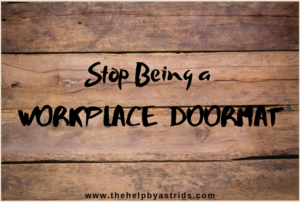
My favorite web browser is Google Chrome. It is secure, easy to navigate and compatible with almost all OS and mobile devices. You can sync your preferences and bookmarks across all devices, making it easier to access your accounts on different devices. I especially like the extensions available in the Chrome Web Store. Extensions make my job easier. If you haven’t tried extensions or don’t know where to start, please read on.
Browser extensions are small software modules used to customize the web browser. They do a host of tasks that help people out with productivity, tracking, management, information wrangling, etc. To get them, you go to the Chrome Web Store to see a large selection of browser extensions. Here are 5 of my favorite and most used ones.
Adobe Acrobat – This extension makes it possible for you to convert current web page to an Adobe PDF file (Windows only) and easier to do so because you no longer have to open and load up Adobe Acrobat DC/Adobe Acrobat XI. You can convert web pages to rich, high-quality PDF files that maintain the look and feel of the original content straight from the website. You can find the Adobe Acrobat browser extension here.
Asana – This extension makes it possible for you to quickly add and search for Asana tasks from any webpage. Other features include: putting tasks directly in any project, quickly adding a task description and assign to a teammate, selecting the appropriate assignee from a dropdown menu, inputting custom fields to your new tasks, and adding the current URL as a task, so you can read articles later or share them with teammates. You can find the Asana browser extension here.
Google Docs Offline – This extension makes it possible for you to get things done offline with the Google Docs family of products. Sometimes we have problems with an intermittent internet connection, or sometimes we may have NO internet connection at all. You can still access Google Docs, Sheets, Slides, and Drive without connecting to the internet with this extension. You can find the Google Docs Offline browser extension here.
Grammarly – This extension makes it possible for you to make sure your messages, documents, and social media posts are clear, mistake-free, and impactful. It is a contextual spelling checker and grammar checker that detects misspelled words, correctly spelled words used in the wrong context, and fix hundreds of complex grammatical errors, including subject-verb agreement, article use, and modifier placement, among others. You can find the Grammarly browser extension here.
Speedtest – This extension makes it possible for you to take a Speedtest directly from our Google Chrome toolbar to quickly test the internet performance without interruption and measure how fast the pages load with Web Speed. You can get ping, download, and upload speeds within seconds through this browser extension. You can find the Speedtest browser extension here.
What are your favorite browser extensions? Share them with us in the comments section. Stay humble and hustle hard.
Written by Jaie O. The Help



